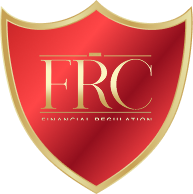For beginner investment advisors, marketing is often an intimidating but crucial part of building a successful practice. While expertise in financial planning and portfolio management is essential, the ability to connect with potential clients and communicate your value proposition effectively determines the growth of your business. In an increasingly competitive industry, advisors who invest time and effort into developing a strategic marketing approach stand out.
This comprehensive guide provides actionable marketing tips designed specifically for new investment advisors. From building a personal brand to leveraging digital tools and cultivating client relationships, these strategies will help you grow your practice with confidence.
The foundation of any successful marketing strategy is understanding who you’re trying to reach. Defining your target audience allows you to tailor your messaging, services, and outreach efforts to the clients who need you most.
Demographics: Identify key attributes such as age, income level, profession, and location.
Financial Goals: Understand their specific needs, such as retirement planning, wealth preservation, or first-time investing.
Challenges: Pinpoint obstacles they face, such as insufficient financial literacy or fear of market volatility.
Niche Markets: Consider specialising in a particular group, such as tech entrepreneurs, young professionals, or retirees.
Example: If your niche is young professionals, your marketing might highlight topics like budgeting, debt management, and beginner investment strategies.
Your personal brand is how clients perceive you and your services. As a beginner, establishing a unique and trustworthy image is critical for differentiating yourself from competitors.
Identify Your Unique Selling Proposition (USP): Highlight what makes you unique, such as expertise in ESG investments or your ability to simplify complex concepts.
Consistency: Ensure your messaging, design elements, and tone are consistent across all platforms.
Professionalism and Personality: Balance professional qualifications with a relatable, human approach that makes clients feel comfortable.
Example: Develop a tagline like “Simplifying Finance for Young Professionals” to align your brand with your target audience.
Your website is often the first interaction potential clients will have with your services, making it one of the most important tools in your marketing arsenal.
About Page: Share your qualifications, certifications, and a brief personal story to build trust.
Clear Call-to-Actions (CTAs): Encourage visitors to schedule a consultation, subscribe to a newsletter, or download a free guide.
Educational Content: Include a blog or resource section to demonstrate expertise and improve SEO.
User-Friendly Design: Ensure your site is mobile-friendly, visually appealing, and easy to navigate.
Example: Offer a free e-book titled "10 Steps to Financial Freedom" in exchange for visitors’ email addresses to build your mailing list.
Social media is a cost-effective way to reach and engage potential clients, especially for beginner advisors who may not yet have a large marketing budget.
Choose Platforms Wisely: Focus on platforms where your target audience is active, such as LinkedIn for professionals or Instagram for younger audiences.
Post Regularly: Share content consistently, whether it’s tips, infographics, or industry news.
Engage with Followers: Respond to comments, join discussions, and build a sense of community.
Example: Share an Instagram infographic titled "3 Investment Mistakes to Avoid" to educate and attract followers.
In the financial advisory field, word-of-mouth referrals and personal connections remain some of the most effective ways to gain new clients.
Local Events: Attend community meetups, business expos, or charity events to connect with potential clients.
Professional Organisations: Join industry groups like the Chartered Institute for Securities and Investment (CISI) to network with peers.
Collaborate with Other Professionals: Build relationships with accountants, lawyers, and real estate agents who can refer clients to you.
Example: Offer a free financial seminar for local business owners to showcase your expertise and expand your network.
Satisfied clients are your best advocates. Referral marketing leverages your existing client base to bring in new business.
Provide Excellent Service: Deliver above-and-beyond service to inspire organic referrals.
Ask for Referrals: Don’t hesitate to ask satisfied clients to recommend your services.
Offer Incentives: Provide small gifts or discounts as a thank-you for referrals, ensuring compliance with regulations.
Example: After successfully helping a client with retirement planning, ask if they know anyone else who could benefit from your services.
Creating valuable content positions you as a thought leader and attracts potential clients to your practice.
Blogs: Write articles addressing common financial questions, such as "How to Start Investing in Your 30s."
Videos: Produce short, engaging videos explaining concepts like "Risk Tolerance Simplified."
Newsletters: Send regular emails with financial tips, market updates, and news about your services.
E-books and Guides: Provide in-depth resources on topics like tax-efficient investing or retirement planning.
Example: Publish a blog series titled "Investment Basics for Beginners" to draw traffic to your website and demonstrate expertise.
Email marketing is an effective way to nurture relationships with potential clients while staying connected with current ones.
Segment Your Audience: Send personalised emails tailored to different client needs or life stages.
Automate Follow-Ups: Use automation tools to stay in touch with prospects and follow up on inquiries.
Provide Value: Share actionable tips, exclusive resources, or event invitations in your emails.
Example: Send a monthly newsletter featuring a “Market Snapshot” and a financial tip of the month.
Hosting events provides an opportunity to showcase your expertise in a low-pressure setting while engaging directly with potential clients.
Educational Webinars: Topics like "Understanding Your 401(k)" or "Investing During Volatile Markets."
Workshops: Hands-on sessions covering budgeting, retirement planning, or saving for education.
Live Q&A Sessions: Allow attendees to ask questions about financial topics in real-time.
Example: Host a webinar titled "5 Steps to Reaching Financial Independence" and follow up with attendees to schedule consultations.
Testimonials and case studies provide social proof, helping potential clients trust your services.
Highlight Success Stories: Share real examples (with permission) of how you’ve helped clients achieve their goals.
Include Visuals: Use photos or videos to make testimonials more engaging.
Follow Compliance Guidelines: Ensure testimonials adhere to industry regulations.
Example: Create a case study showcasing how you helped a young family save for their children’s education while building their retirement fund.
Certifications like the Investment Advisor Certificate (IAC) offered by Financial Regulation Courses (FRC) establish your credibility and demonstrate your commitment to excellence. Ongoing training ensures you stay informed about the latest financial trends and regulatory changes, allowing you to position yourself as an expert in the field.
Tracking and analysing your marketing efforts ensures you focus on what works and optimise where necessary.
Website Traffic: Track how many visitors your site receives and which pages perform best.
Social Media Engagement: Measure likes, shares, comments, and clicks to gauge audience interest.
Lead Conversion Rates: Assess how effectively your marketing efforts turn prospects into paying clients.
Retention Rates: Monitor how well you maintain relationships with existing clients.
Example: Use Google Analytics to identify which blog topics generate the most interest and adjust your content strategy accordingly.
While organic marketing methods are essential, paid advertising can accelerate your client acquisition efforts.
Google Ads: Target users searching for investment-related terms.
Social Media Ads: Promote your services to a specific demographic on LinkedIn, Facebook, or Instagram.
Sponsored Content: Partner with financial blogs or websites to feature your expertise.
Example: Run a LinkedIn ad campaign targeting professionals aged 30–50 with the message, "Plan Your Financial Future Today."
Partnering with established professionals or influencers in related fields can expand your reach and lend credibility to your practice.
Joint Webinars: Co-host events with accountants, lawyers, or real estate agents.
Guest Blogging: Write articles for reputable financial platforms or invite experts to contribute to your blog.
Podcast Appearances: Share your expertise on podcasts related to finance, entrepreneurship, or personal development.
Example: Co-host a webinar with a tax expert on "Year-End Tax Strategies for Investors."
For beginner investment advisors, marketing is both a challenge and an opportunity to differentiate yourself in a competitive industry. By defining your target audience, building a personal brand, and leveraging digital tools, you can establish a strong foundation for attracting and retaining clients. Strategies such as networking, content creation, email campaigns, and event hosting help you connect with prospects and showcase your expertise.
Certifications like the Investment Advisor Certificate (IAC), combined with a commitment to continuous learning, ensure you remain knowledgeable and credible. Measuring the success of your efforts through analytics enables you to refine your strategies and focus on what delivers the best results.
Marketing success requires patience and persistence, but with a clear strategy and consistent effort, you can build a thriving practice and position yourself as a trusted advisor in the financial services industry.
Be the first to know about new class launches and announcements.


Financial writer and analyst Ron Finely shows you how to navigate financial markets, manage investments, and build wealth through strategic decision-making.
